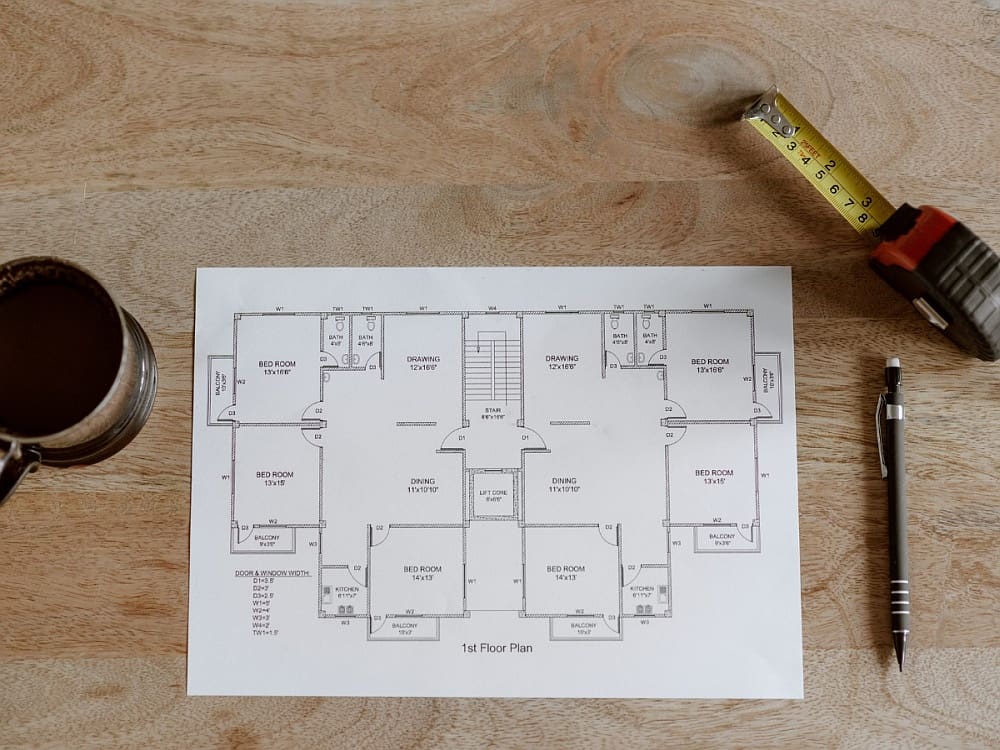Table of contents
- Summary
- Understanding Floor Heating Systems
- Critical Benefits of Floor Heating Systems
- Considerations Before Radiant Floor Heating Systems Installation
- Choosing the Right System for Your Home
- Common Misconceptions About Floor Heating Systems
- Practical Installation Tips and FAQs
- Post-Installation Care Recommendations
- Conclusion
- Read More
Estimated reading time: 11 minutes
Summary
Indulge in the luxury and practicality of floor heating systems. Picture stepping out of bed or a shower onto a perfectly warm floor, even on the coldest mornings—that’s the kind of comfort these systems provide. Beyond their cozy appeal, they’re also an energy-efficient alternative to traditional heating systems, helping homeowners cut down on utility bills while reducing their carbon footprint.
This guide is your key to understanding the essentials of floor heating systems. Whether you’re just starting to think about renovations or actively planning your dream home, this article will empower you to make informed decisions about whether this modern heating solution fits your needs.
Understanding Floor Heating Systems
Floor heating systems, or radiant floor heating, work by directly warming the floor surface and radiating heat into your space. This approach ensures an even and consistent temperature throughout the room, unlike traditional heating methods that rely on hot air rising unevenly from radiators or vents.
There are two main types of floor heating systems:
- Electric Radiant Floor Heating: These systems use electric heating cables embedded beneath the flooring. They are ideal for small spaces like bathrooms or kitchens due to their ease of installation and quick heating capabilities.
- Hydronic (Water-Based) Systems: These systems circulate warm water through pipes installed under the floor. They’re more complex to install but offer excellent efficiency for larger areas or homes.
How They Differ From Traditional Heating
One of the standout benefits of floor heating systems is their ability to eliminate those annoying hot and cold spots you often experience with radiators or forced air systems. Instead of heating just one part of the room, radiant floor heating spreads warmth evenly across the entire space.
Additionally, these systems are whisper-quiet. Unlike the hums and whooshes of forced air systems, floor heating operates silently, allowing you to enjoy a peaceful environment.
Where Are Floor Heating Systems Most Beneficial?
While floor heating can be installed throughout a home, it’s particularly popular in areas where tile or stone flooring is common, such as bathrooms and kitchens. These materials tend to stay cold underfoot, so adding radiant heat can make these spaces significantly more comfortable. However, with the right setup, entire homes, from cozy cottages to spacious family houses, can benefit from this cozy, efficient heating solution.
Stay tuned for the following sections, where we’ll discuss the pros, cons, and practical steps for incorporating floor heating into your renovation plans!
Critical Benefits of Floor Heating Systems

When deciding whether to include floor heating systems in your home renovation, it’s helpful to understand the standout benefits these systems offer. From unparalleled comfort to enhanced design flexibility, here’s why radiant floor heating might be your home’s upgrade.
Comfort
Imagine waking up on a frosty winter morning and stepping onto a toasty, warm floor instead of an icy tile. Floor heating systems ensure even heat distribution, meaning no more drafts or cold spots to disrupt your cozy environment. Unlike traditional radiators that create uneven temperatures, radiant heating delivers consistent warmth across the room.
This comfort isn’t limited to your feet—it transforms the entire room into a haven of cozy, uniform warmth. Especially in spaces like bathrooms or kitchens, where tiles tend to stay cold, radiant heating makes these areas much more inviting during chilly seasons.
Energy Efficiency
One of the most significant selling points of floor heating is its potential energy efficiency. While the upfront costs can be higher, the system’s operational efficiency often leads to lower energy bills over time. Hydronic systems, in particular, are highly cost-effective for heating larger spaces.
Pairing floor heating with a smart thermostat takes efficiency to the next level. These devices allow you to optimize heating schedules, ensuring the system runs only when needed, saving energy and money without compromising comfort. A smart thermostat can learn your heating preferences, adjust the temperature based on your daily routine, and even be controlled remotely via a smartphone app, giving you full control over your home’s heating system.
Design Flexibility
Say goodbye to bulky radiators and intrusive vents! Floor heating systems are hidden beneath the surface, giving you more freedom to design your interiors. This extra space can be a game-changer, especially in smaller rooms where every inch counts.
With no need for visible heating units, your walls and furniture placement options are no longer dictated by where the radiators or vents are located. Whether you dream of minimalist decor or want to showcase large windows and open layouts, radiant heating supports your design vision.
Improved Indoor Air Quality
Traditional forced-air systems can stir up dust, allergens, and other airborne particles, potentially worsening indoor air quality. Floor heating systems don’t rely on moving air to warm a space, reducing the circulation of allergens. Radiant heating is a healthier alternative for households with allergy sufferers or those simply aiming for cleaner air.
From cozy toes to energy savings and improved air quality, floor heating offers many benefits beyond essential heating. However, like any significant upgrade, it is important to weigh these advantages against crucial considerations before investing.
Considerations Before Radiant Floor Heating Systems Installation

While floor heating systems provide comfort and efficiency, a successful installation requires thoughtful planning. Here are the key factors to consider before leaping.
Cost
The upfront costs of installing floor heating can vary significantly based on the system type. Electric radiant systems are generally more affordable to install but may have higher operating costs for large areas. Hydronic systems, while pricier to install due to the need for water pipes and boilers, are more economical for heating larger spaces in the long run.
It’s essential to balance these initial costs with the long-term energy savings. Over time, reduced utility bills can offset the upfront investment, especially in well-insulated homes where heat loss is minimized.
Compatibility With Flooring Types
Floor heating works best with certain flooring materials that effectively conduct and retain heat. Tile and stone are top choices as they quickly transfer heat and stay warm. On the other hand, thicker materials like carpet or solid wood can act as insulators, reducing the system’s efficiency.
If you’re set on using wood or carpet, thinner options or special underlays may improve compatibility. Consulting with professionals can ensure your flooring choice works seamlessly with your heating system.
Retrofit vs. New Construction
Installing floor heating is most straightforward in new construction or during major renovations. In these cases, the system can be seamlessly integrated into the subflooring during the building process.
Retrofitting into an existing structure, however, can take more work. It may require raising the floor height, affecting door clearance and furniture placement. While it’s not impossible, retrofitting typically involves additional costs and planning.
Climate and Usage
Radiant floor heating is especially beneficial in colder climates where consistent warmth is a priority. However, it may be better suited for specific zones like bathrooms or kitchens in milder climates rather than the entire home. Assess your local weather patterns and usage habits to determine whether a full-home installation is necessary.
Maintenance and Longevity
Both electric and hydronic systems are designed for durability, often lasting 20 years or more with proper installation. Maintenance requirements are generally low, but regular checks can ensure the system operates efficiently. Hydronic systems may require occasional boiler or pump service, while electric systems typically require little maintenance.
Consider these factors—cost, compatibility, installation context, and maintenance—to decide whether floor heating is the right choice for your home renovation.
Choosing the Right System for Your Home
Selecting the perfect floor heating system for your home requires careful consideration of several factors. Understanding the size of the area you want to heat and your budget constraints are crucial in making the best choice. If you’re looking for more detailed insights or professional guidance, visit floorheatingsystemsinc.com to explore a range of options and expert advice tailored to your needs.
Factors to Consider
- Size of the Area: The size of the space you want to heat is crucial in determining the type of system to install. Electric radiant systems are ideal for smaller areas like bathrooms or kitchens. In contrast, hydronic systems are better suited for larger spaces or entire homes.
- Budget Constraints: Hydronic systems have a higher upfront cost but are more cost-efficient over time for large spaces. Electric systems are more budget-friendly for installation. Still, they may cost more to operate in the long run.
- Energy Source Availability: Your choice may also depend on the energy sources available in your area. Hydronic systems often rely on gas or solar water heaters, while electric systems require reliable access to electricity.
Consulting Experts
Professional guidance ensures your system is installed correctly and operates efficiently. Look for certified installers from the Radiant Professionals Alliance (RPA) or similar organizations. A certified expert can help you evaluate your home’s needs and recommend the best system, ensuring a seamless installation process.
By weighing these factors and seeking expert advice, you’ll be well-equipped to choose a system that meets your home’s requirements and budget.
Common Misconceptions About Floor Heating Systems
Despite their growing popularity, floor heating systems often need to be understood better. Let’s debunk some common myths and set the record straight.
“Too Expensive”
Many homeowners believe floor heating systems are prohibitively expensive. While the upfront installation cost can be higher than traditional heating, the long-term energy savings often compensate for it. Hydronic systems, in particular, offer excellent cost-efficiency for large spaces, and advancements in installation techniques have made these systems more affordable than ever.
“Takes Too Long to Heat Up”
Another misconception is that floor heating takes forever to warm up. While hydronic systems can take a bit longer to heat large areas, electric systems are known for their quick response time. Additionally, smart thermostats can be programmed to preheat your floors, ensuring they’re warm exactly when you need them.
“Only Suitable for Luxury Homes”
Floor heating has often been marketed as a high-end upgrade, but it’s no longer exclusive to luxury homes. With various systems available at varying prices, homeowners with modest budgets can also enjoy the benefits of radiant heating. From small bathroom installations to whole-home solutions, there’s an option for every need and price range.
Addressing these misconceptions, it’s clear that floor heating systems are a practical, efficient, and increasingly accessible choice for modern homes. With the right planning and understanding, anyone can enjoy warmth and comfort.
Practical Installation Tips and FAQs
Installing a floor heating system might sound complex, but understanding the process and what to expect can help ease any concerns. Here’s a breakdown of installation tips and answers to common questions to guide you through.
What to Expect During the Installation Process
The installation process varies depending on the type of system (electric or hydronic) and whether it’s part of a new build or a retrofit. For new construction or major renovations, the system is typically laid directly onto the subfloor before the final flooring is installed. Retrofitting an existing home may require raising the floor height or removing the existing flooring, which can add to the complexity.
The process usually involves preparing the subfloor, installing the heating elements (cables for electric systems or pipes for hydronic systems), and then covering them with a thin layer of screed or an underlayment before adding the top flooring. Depending on the scope, installation can take anywhere from a day for small spaces to several days for larger projects.
How long does installation take?
Small spaces like bathrooms can often be completed in a day or two. Larger areas or hydronic systems may take several days to a week.
Will there be disruptions?
Yes, but they’re manageable. Expect some noise and limited access to the areas being worked on. For retrofits, you may need to temporarily relocate furniture and appliances.
What about warranties?
Most systems come with warranties ranging from 10 to 25 years, depending on the manufacturer and the quality of installation. Always check this before committing.
Post-Installation Care Recommendations
Once your floor heating system is installed, it requires minimal upkeep. Avoid using nails or screws on the floor that could damage the heating elements. Regularly check your thermostat and settings to ensure optimal performance. For hydronic systems, occasional servicing of the boiler or pump may be needed.
Your floor heating system can provide years of hassle-free comfort with the proper preparation and care.
Conclusion
Floor heating systems offer an impressive combination of comfort, efficiency, and modern design flexibility, making them a valuable upgrade for any home renovation. From their even heat distribution to energy-saving capabilities, these systems are designed to enhance your living experience while reducing environmental impact.
That said, initial costs, compatibility with flooring types, and installation considerations are essential to ensure the system aligns with your needs. Whether planning a new build or retrofitting an existing space, there’s a floor heating solution to suit almost every home and budget.
Ready to take the next step? Consult an expert to evaluate your space, energy sources, and personal preferences. They’ll help you determine the best system for your lifestyle and guide you through a smooth installation process. Proper planning allows you to enjoy the unparalleled comfort of warm floors for years to come.




